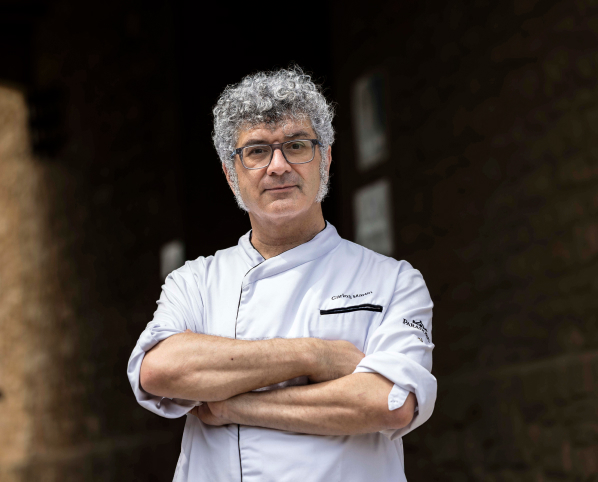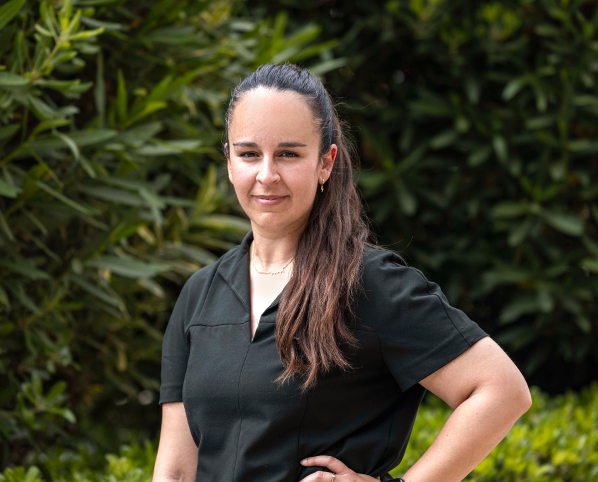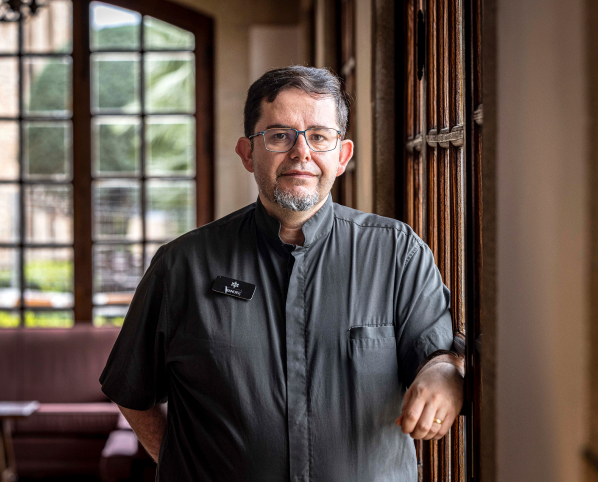Where the Ebro makes you forget the sea
There's a postcard of Tortosa that's worth seeing in person. Instead of heading to your accommodation as soon as you arrive to drop off your things, everything changes if you first stop in the Ferrerías neighborhood, on the right bank of the Ebro. The photograph is as follows: the river rests flat and old Tortosa, now on the shore, unfolds into five or six levels, no more, and reveals its face in five or six variations of ochre. At the very top, in harmony with the rest of the buildings, stands the Zuda Castle, over which the Parador was built in 1976.
From this dominant hotel—the views foreshadow everything to come—you can walk down to the Renaissance Royal Colleges, where the Moriscos were re-educated with bacon and wine in the 16th century. Also nearby is the unfinished cathedral, with its Baroque façade decorated with marble, and modernist houses, such as the Grego, evidence of a late 19th-century revival of a bourgeoisie linked to the oil trade. After visiting the monuments, if you continue downriver for 30 kilometers, you reach the Ebro Delta, a wetland carpeted with rice paddies and 350 species of birds that fly overhead. It's a different story. You forget that the sea is right there.

The Ebro River, as it passes through Tortosa, and the Parador, on the highest point, built from scratch in 1976 on the remains of the Suda Castle. The cathedral, the Royal Colleges, and the early 20th-century Modernist houses, the city's main attractions, are a five-minute walk away.

The keep and the old town of Tortosa at its feet, with the Ebro River dominating the landscape. The hotel has a swimming pool, renovated this year and open since June 20. The Parador, says Álvaro Ramos, its manager, is a destination for those who want to sleep in a castle, a Templar fortress in this case.

A customer stops in front of an open-air 10th-century Arab cemetery next to the inn. The archway, which leads to the reception and cafeteria, is one of the remaining vestiges of the castle built during the reign of Abd al-Rahman III. It is called Zuda (well in Arabic), a reference to the deep hole that was built when it was converted into a citadel. Inside, there is a tombstone of Governor Abd al-Salamb, who died in 961.

One of the hotel's common areas, which has 72 rooms and employs 50 people. There are function rooms for private celebrations and corporate events. Two out of three guests are Spanish. Some foreigners use it as a stopover on their tour of the Spanish Levante region. It is one of the 26 paradores adapted for cycle tourism.

The dining room where breakfast is served has mountain views. The restaurant, in a spacious and versatile space suitable for celebrations, serves regional cuisine. Rice dishes from the Ebro Delta are a favorite: brothy dishes in winter and creamy dishes in summer, such as tot pelat (all peeled).
Former
Following
The Tortosa Parador is a destination and a stopover. Its manager, Álvaro Ramos, explains: “Some people come for the pleasure of sleeping in a castle, and there are foreign guests who use it as a cultural stopover on their journey to other parts of Spain.” All those who choose to visit visit the city and the Ebro Delta. “Culture, nature, and gastronomy” are enough for Ramos to summarize the attractions in the parador restaurant, while sipping on a rice dish , all peeled, so as not to bother with the shells.
Some customers, when you mention rice to them, wonder in surprise if they're in Valencia, says the manager. And no, there's delicious rice all over the Levant. "We make one baked, it has Iberian bacon, it's different," he smacks his lips. "In winter, we order a lot of broths," he explains. They're all made with rice from the Ebro Delta, which was introduced by Valencian farmers, true, but that was 165 years ago. Chorizo paella is an English dish; just as in Chicago, they started adding pepperoni to pizza when it wasn't the custom in Italy. Everything travels. Everything blends.
Cultural visits, sustainable tourism, local revitalization... How to get the most out of the area where the Tortosa Parador is located.
If the first impression of Tortosa is to be captured on the banks of the Ebro, the city tour must begin at the parador. Oriol Segarra, Director of Tourism for Tortosa City Council, stands on the wall surrounding the castle to begin his speech. “This city will never be able to recover the economic, cultural, and political splendor it once had,” he states without regret, but rather to recall all the dominant periods since ancient times. From where the parador stands, an Iberian settlement already sprawled out 2,500 years ago. Nearby are Roman columns and an Arab cemetery, the only one left uncovered in Catalonia. Tortosa has always been a disputed border, a strategic point, even during the Civil War, when 80 bombings razed a third of the city. An air-raid shelter converted into a museum recreates those moments. Walking through the galleries and hearing the sirens is impressive, agonizing—it has to be that way.
“Rivers were the great highways before the arrival of the railway. The goal was to control the Ebro,” says Segarra at the foot of this greenish pond with lush riverside vegetation. Tortosa lies between two meanders. A mere few hundred meters aboard a small boat that offers one-hour excursions leaves all buildings behind and finds itself immersed in nature. The last period of prosperity was at the end of the 19th century, when families dedicated to the oil trade proliferated. It is still a region abundant with olive and citrus trees. From those years, we can still see the modernist houses of these merchants who exported to America, such as Casa Grego, the most representative by the municipal architect Pau Monguió; or the equally modernist municipal market, which Segarra insists on recommending for its lively atmosphere starting at 8 a.m. “Tortosa is sometimes referred to as the fifth province of Catalonia,” says the Director of Tourism. Its inhabitants mention the Terres de l'Ebre as a grouping of four more regions than Tarragona.

Pastissets are a type of pastry made with flour, egg, and lard, typical of this region. We serve them at the parador, and they can be filled with chocolate, angel hair, or orange preserves.
Carlos Martín
Head chef for 24 years at Paradores

Mont Caro (1,414 meters) is just 20 minutes from the beach. You can start the hike from Els pous de la neu (the snow wells), where holes were dug in the mountain to store ice and bring it down to the city.
Vanessa Gonzalez
Housekeeper for 17 years at Paradores

A beautiful town is Horta de Sant Joan, where Picasso lived for two periods and painted landscapes, such as the Santa Bárbara mountain. Reproductions of these works are on display at the Centre Picasso d'Horta.
Manuel Ordóñez
Receptionist for 16 years at Paradores
Wetlands like the Ebro Delta need time. It's not the instant awe of the mountains or the bewitchment of the sea. It seems as if nothing happens there, like in the desert, but they have grandeur, the view reaches far, the gaze can be inward. Nature guide Cristina Pérez is excited to see the kingfisher from the Riet Vell observatory: "One of the most photographed and preferred by ornithologists," she says. "It always sits on the same branch," she announces to guarantee the prize. Pérez asks for silence upon entering—binoculars in one hand, bird guide in the other—but the wooden hut was already buzzing that June day. Perhaps someone couldn't contain their excitement at seeing the gregarious and stable flamingos, which form loyal lifelong friendships and maintain long-lasting mating relationships. The fact is that the kingfisher, the promised 16-centimeter blue and green bird with a fast, penetrating song, was not on the branch it was supposed to be on.
You have to return to the delta because it changes radically with each season. Now that summer is here, it's green. The rice plants are peeking out of the water. Already in August, the landscape turns golden with the grain, the grain is ripe, ready for harvesting in September. The harvesters move the mud and worms appear, food for the birds. Bicycles were once used to move quickly through the fields. "They called it the machine, it was like having a good car," recalls Pérez, who spent summers in a small house in the delta. This mode of transportation makes visits more fun today; there are local kids pedaling with yellow vests to avoid getting lost, families. Routes are plotted from one observatory to another; the roads are dirt, and you can go all the way to Trabucador beach to try to take pictures of the sun when it's orange. Everything makes more sense.
The point of the riceThe variety of grain and its color (brown or whiter) influence cooking time and the absorption of broth. Altitude also influences this. Water boils at 100 degrees at sea level. As you go higher, it boils at a lower temperature: in Ávila, it takes three minutes longer to cook than on the coast. At the Lo Nostre Arròs mill, in the delta, they explain the entire rice process from planting, offer guided tours of the factory, and teach how to cook it. “We receive 3,000 people a year,” says Jordi Margarell, the owner, a fifth-generation rice cooker. “Brownier rice uses more broth,” he warns. Smaller mills tend to leave it a little darker, don't bleach it as much, put less pressure on the grain, and offer a more natural flavor. Lo Nostre Arròs mills four varieties: bomba (paella), marisma (brothy), carnaroli (risotto), and hoshi (sushi). With two kilos of husk rice as harvested, one kilo of grain is obtained for sale.
There are recipes in this area that include birds observed and hunted (in autumn) in the delta, such as ducks, coots, and moorhens. They add a lot of flavor and fat, too. They're rich in rice dishes, and it's not easy to find socarrat .
—Which is your favorite?
—The seafood one, with mussels and cuttlefish. Made with fish broth. But don't make it have so many things. I don't want to be constantly putting them aside so I can eat rice.
EL PAÍS





